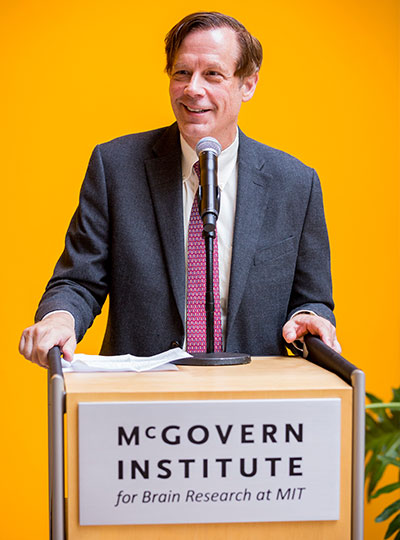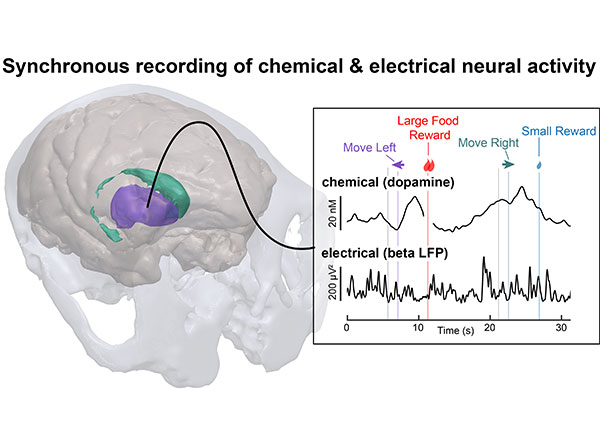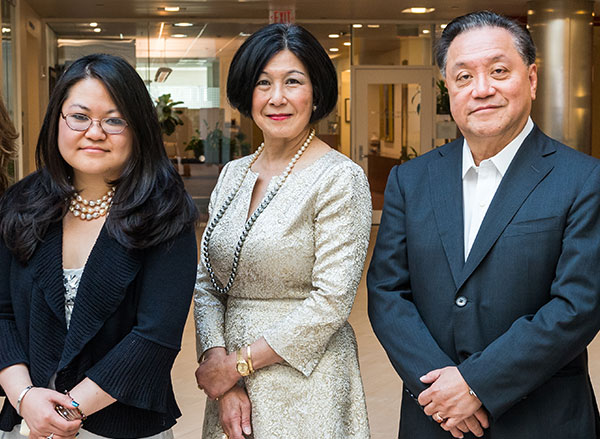The U.S. National Science Foundation (NSF) announced today an investment of more than $100 million to establish five artificial intelligence (AI) institutes, each receiving roughly $20 million over five years. One of these, the NSF AI Institute for Artificial Intelligence and Fundamental Interactions (IAIFI), will be led by MIT’s Laboratory for Nuclear Science (LNS) and become the intellectual home of more than 25 physics and AI senior researchers at MIT and Harvard, Northeastern, and Tufts universities.
By merging research in physics and AI, the IAIFI seeks to tackle some of the most challenging problems in physics, including precision calculations of the structure of matter, gravitational-wave detection of merging black holes, and the extraction of new physical laws from noisy data.
“The goal of the IAIFI is to develop the next generation of AI technologies, based on the transformative idea that artificial intelligence can directly incorporate physics intelligence,” says Jesse Thaler, an associate professor of physics at MIT, LNS researcher, and IAIFI director. “By fusing the ‘deep learning’ revolution with the time-tested strategies of ‘deep thinking’ in physics, we aim to gain a deeper understanding of our universe and of the principles underlying intelligence.”
IAIFI researchers say their approach will enable making groundbreaking physics discoveries, and advance AI more generally, through the development of novel AI approaches that incorporate first principles from fundamental physics.
“Invoking the simple principle of translational symmetry — which in nature gives rise to conservation of momentum — led to dramatic improvements in image recognition,” says Mike Williams, an associate professor of physics at MIT, LNS researcher, and IAIFI deputy director. “We believe incorporating more complex physics principles will revolutionize how AI is used to study fundamental interactions, while simultaneously advancing the foundations of AI.”
In addition, a core element of the IAIFI mission is to transfer their technologies to the broader AI community.
“Recognizing the critical role of AI, NSF is investing in collaborative research and education hubs, such as the NSF IAIFI anchored at MIT, which will bring together academia, industry, and government to unearth profound discoveries and develop new capabilities,” says NSF Director Sethuraman Panchanathan. “Just as prior NSF investments enabled the breakthroughs that have given rise to today’s AI revolution, the awards being announced today will drive discovery and innovation that will sustain American leadership and competitiveness in AI for decades to come.”
Research in AI and fundamental interactions
Fundamental interactions are described by two pillars of modern physics: at short distances by the Standard Model of particle physics, and at long distances by the Lambda Cold Dark Matter model of Big Bang cosmology. Both models are based on physical first principles such as causality and space-time symmetries. An abundance of experimental evidence supports these theories, but also exposes where they are incomplete, most pressingly that the Standard Model does not explain the nature of dark matter, which plays an essential role in cosmology.
AI has the potential to help answer these questions and others in physics.
For many physics problems, the governing equations that encode the fundamental physical laws are known. However, undertaking key calculations within these frameworks, as is essential to test our understanding of the universe and guide physics discovery, can be computationally demanding or even intractable. IAIFI researchers are developing AI for such first-principles theory studies, which naturally require AI approaches that rigorously encode physics knowledge.
“My group is developing new provably exact algorithms for theoretical nuclear physics,” says Phiala Shanahan, an assistant professor of physics and LNS researcher at MIT. “Our first-principles approach turns out to have applications in other areas of science and even in robotics, leading to exciting collaborations with industry partners.”
Incorporating physics principles into AI could also have a major impact on many experimental applications, such as designing AI methods that are more easily verifiable. IAIFI researchers are working to enhance the scientific potential of various facilities, including the Large Hadron Collider (LHC) and the Laser Interferometer Gravity Wave Observatory (LIGO).
“Gravitational-wave detectors are among the most sensitive instruments on Earth, but the computational systems used to operate them are mostly based on technology from the previous century,” says Principal Research Scientist Lisa Barsotti of the MIT Kavli Institute for Astrophysics and Space Research. “We have only begun to scratch the surface of what can be done with AI; just enough to see that the IAIFI will be a game-changer.”
The unique features of these physics applications also offer compelling research opportunities in AI more broadly. For example, physics-informed architectures and hardware development could lead to advances in the speed of AI algorithms, and work in statistical physics is providing a theoretical foundation for understanding AI dynamics.
“Physics has inspired many time-tested ideas in machine learning: maximizing entropy, Boltzmann machines, and variational inference, to name a few,” says Pulkit Agrawal, an assistant professor of electrical engineering and computer science at MIT, and researcher in the Computer Science and Artificial Intelligence Laboratory (CSAIL). “We believe that close interaction between physics and AI researchers will be the catalyst that leads to the next generation of machine learning algorithms.”
Cultivating early-career talent
AI technologies are advancing rapidly, making it both important and challenging to train junior researchers at the intersection of physics and AI. The IAIFI aims to recruit and train a talented and diverse group of early-career researchers, including at the postdoc level through its IAIFI Fellows Program.
“By offering our fellows their choice of research problems, and the chance to focus on cutting-edge challenges in physics and AI, we will prepare many talented young scientists to become future leaders in both academia and industry,” says MIT professor of physics Marin Soljacic of the Research Laboratory of Electronics (RLE).
IAIFI researchers hope these fellows will spark interdisciplinary and multi-investigator collaborations, generate new ideas and approaches, translate physics challenges beyond their native domains, and help develop a common language across disciplines. Applications for the inaugural IAIFI fellows are due in mid-October.
Another related effort spearheaded by Thaler, Williams, and Alexander Rakhlin, an associate professor of brain and cognitive science at MIT and researcher in the Institute for Data, Systems, and Society (IDSS), is the development of a new interdisciplinary PhD program in physics, statistics, and data science, a collaborative effort between the Department of Physics and the Statistics and Data Science Center.
“Statistics and data science are among the foundational pillars of AI. Physics joining the interdisciplinary doctoral program will bring forth new ideas and areas of exploration, while fostering a new generation of leaders at the intersection of physics, statistics, and AI,” says Rakhlin.
Education, outreach, and partnerships
The IAIFI aims to cultivate “human intelligence” by promoting education and outreach. For example, IAIFI members will contribute to establishing a MicroMasters degree program at MIT for students from non-traditional backgrounds.
“We will increase the number of students in both physics and AI from underrepresented groups by providing fellowships for the MicroMasters program,” says Isaac Chuang, professor of physics and electrical engineering, senior associate dean for digital learning, and RLE researcher at MIT. “We also plan on working with undergraduate MIT Summer Research Program students, to introduce them to the tools of physics and AI research that they might not have access to at their home institutions.”
The IAIFI plans to expand its impact via numerous outreach efforts, including a K-12 program in which students are given data from the LHC and LIGO and tasked with rediscovering the Higgs boson and gravitational waves.
“After confirming these recent Nobel Prizes, we can ask the students to find tiny artificial signals embedded in the data using AI and fundamental physics principles,” says assistant professor of physics Phil Harris, an LNS researcher at MIT. “With projects like this, we hope to disseminate knowledge about — and enthusiasm for — physics, AI, and their intersection.”
In addition, the IAIFI will collaborate with industry and government to advance the frontiers of both AI and physics, as well as societal sectors that stand to benefit from AI innovation. IAIFI members already have many active collaborations with industry partners, including DeepMind, Microsoft Research, and Amazon.
“We will tackle two of the greatest mysteries of science: how our universe works and how intelligence works,” says MIT professor of physics Max Tegmark, an MIT Kavli Institute researcher. “Our key strategy is to link them, using physics to improve AI and AI to improve physics. We’re delighted that the NSF is investing the vital seed funding needed to launch this exciting effort.”
Building new connections at MIT and beyond
Leveraging MIT’s culture of collaboration, the IAIFI aims to generate new connections and to strengthen existing ones across MIT and beyond.
Of the 27 current IAIFI senior investigators, 16 are at MIT and members of the LNS, RLE, MIT Kavli Institute, CSAIL, and IDSS. In addition, IAIFI investigators are members of related NSF-supported efforts at MIT, such as the Center for Brains, Minds, and Machines within the McGovern Institute for Brain Research and the MIT-Harvard Center for Ultracold Atoms.
“We expect a lot of creative synergies as we bring physics and computer science together to study AI,” says Bill Freeman, the Thomas and Gerd Perkins Professor of Electrical Engineering and Computer Science and researcher in CSAIL. “I’m excited to work with my physics colleagues on topics that bridge these fields.”
More broadly, the IAIFI aims to make Cambridge, Massachusetts, and the surrounding Boston area a hub for collaborative efforts to advance both physics and AI.
“As we teach in 8.01 and 8.02, part of what makes physics so powerful is that it provides a universal language that can be applied to a wide range of scientific problems,” says Thaler. “Through the IAIFI, we will create a common language that transcends the intellectual borders between physics and AI to facilitate groundbreaking discoveries.”




